In the snowy northern reaches of Japan, the people of Aomori embrace the cold with a dish that radiates warmth—Aomori Shoga Miso Oden. This local specialty offers more than just comfort food; it tells a story of resourcefulness, flavor, and tradition. Let’s dive into what makes this dish so beloved, its origins, and why it’s best enjoyed in the colder months.
What is Aomori Shoga Miso Oden?
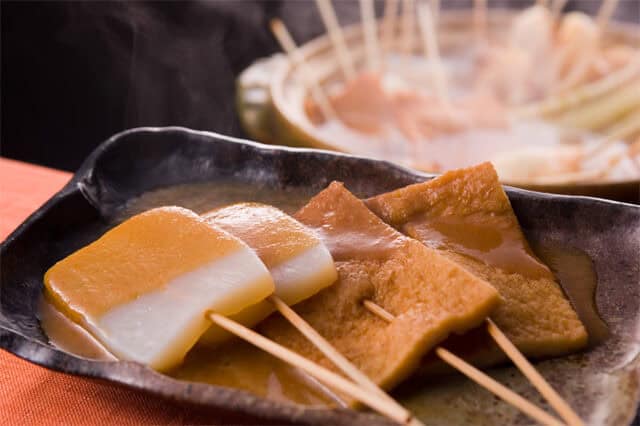
Locals in Aomori put their twist on the classic Japanese hot pot dish, oden, by adding a special sauce. Traditional oden simmers ingredients like daikon radish, konnyaku (a jelly made from konjac yam), fish cakes, and hard-boiled eggs in a light soy-based broth. But in Aomori, people don’t stop at the broth—they dip everything in a rich miso sauce packed with freshly grated ginger.
This ginger-miso sauce transforms each bite. The miso provides deep umami, while the ginger adds a spicy, aromatic warmth that seeps into your bones. As the ingredients slowly simmer, they soak up the broth, becoming tender and flavorful. Once dipped in the ginger-miso, they deliver a punch of comfort that defines this regional version of oden. Locals and visitors alike savor this combination during the cold months, often gathering around steaming bowls to share a meal that warms the body and spirit.
The History Behind Aomori Shoga Miso Oden
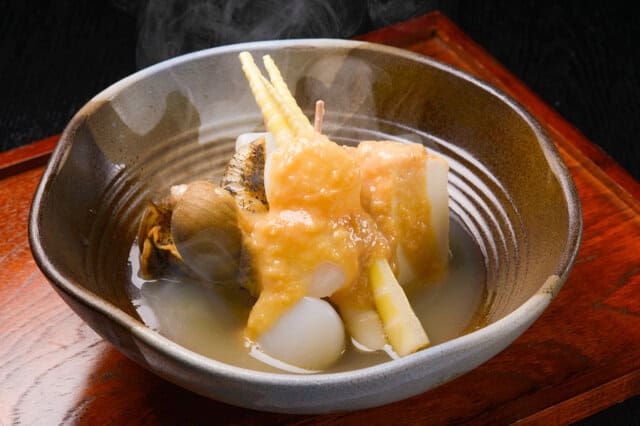
After World War II, street vendors in Aomori started selling oden near Aomori Station to hungry travelers braving the frigid wind while waiting for trains or ships. To boost the dish’s warming qualities, these vendors began offering a sauce made from miso and ginger—two ingredients already familiar and accessible in local kitchens.
This clever addition did more than just provide extra heat; it elevated the flavor and created a new food tradition. The sauce made the oden heartier and more satisfying during winter, helping it stand out from other versions in Japan. Over time, the community embraced this adaptation, turning it into a symbol of local pride. Today, Aomori Shoga Miso Oden stands as a testament to the ingenuity of its people and their ability to turn simple ingredients into a memorable culinary experience.
When to Enjoy It?
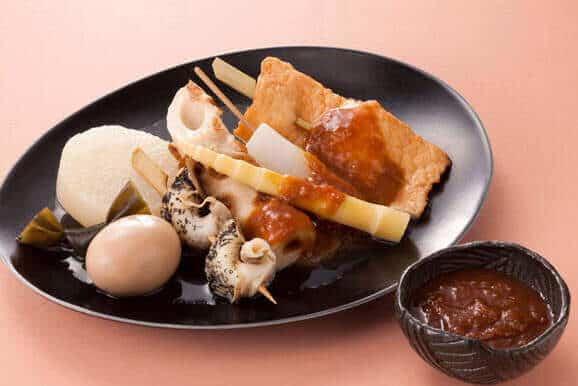
While some restaurants serve Aomori Shoga Miso Oden year-round, locals look forward to it the most during autumn and winter. As temperatures drop and snow blankets the city, people seek comfort in warm, nourishing dishes—and this oden delivers. The ginger-miso sauce adds a fiery touch that’s perfect for chilly days, making it a go-to choice in colder seasons. Whether you eat it at a street stall, a cozy izakaya, or a train station vendor, the experience feels perfectly timed with the season.
Places to Eat Aomori’s Ginger Miso Oden
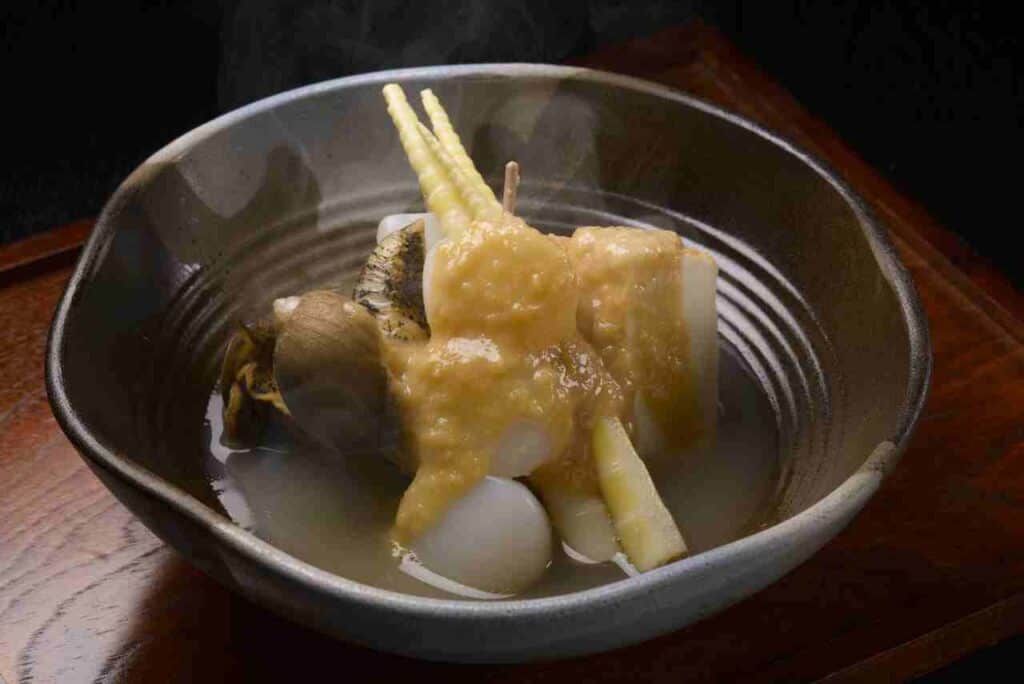
Aomori’s ginger miso oden is a regional specialty mainly enjoyed in the Tsugaru region, centered around Aomori City. Born in postwar food stalls near Aomori Station, this warm comfort food features a ginger-infused miso sauce poured generously over oden. In Aomori, “oden” often means this ginger miso style!
Nebuta no Kuni Takakyu (ねぶたの國 たか久)
A lively izakaya where you can enjoy Tsugaru shamisen and Nebuta music performances every evening (7:00pm–9:00pm). They’re famous for local Aomori cuisine and, of course, their ginger miso oden. With seating for up to 150 people and private rooms, it’s a favorite among both locals and tourists.
Kakigen (柿源)
This seafood eatery is just a 3-minute walk from Aomori Station. Along with their signature scallop dishes and fresh seafood, you can enjoy Aomori’s classic ginger miso oden. A convenient spot for travelers to try local flavors.
Yuugiri (ゆうぎり)
A classic izakaya housed in a historic building near Shinmachi’s Passage Plaza. Loved by locals for decades, it serves Aomori’s traditional dishes and ginger miso oden in a cozy, nostalgic setting. Private rooms available.
Conclusion
Aomori Shoga Miso Oden invites you to taste a piece of Aomori’s heart. It blends tradition, local flavors, and warmth into a single bowl. If you find yourself in northern Japan during the colder months, don’t miss this hearty, gingery dish.
And if you enjoy it, consider trying other regional specialties like Hokkaido’s soup curry or a bubbling pot of Japanese nabe. It would be nice to try basic oden also. You’ll discover just how delicious and meaningful comfort food can be.
Aomori Shōga Miso Oden (青森生姜味噌おでん) FAQ
- What is Aomori Shōga Miso Oden?
It’s a regional version of Japanese oden from Aomori, featuring classic oden ingredients topped with a warm, slightly spicy ginger miso sauce.
- How is it different from regular oden?
While regular oden is served in a light soy-based broth, Aomori’s style is eaten with a thick miso sauce mixed with grated ginger, giving it a unique, warming flavor.
- What does it taste like?
The ginger adds a gentle spiciness, and the miso gives a rich, savory-sweet taste—perfect for cold Aomori winters.
- What ingredients are usually included?
Common items include daikon radish, konnyaku, boiled eggs, tofu, and fish cakes, all topped with the signature ginger miso.
- When is Aomori Shōga Miso Oden eaten?
It’s especially popular during the winter months and is often enjoyed at food stalls, izakaya, and festivals.
- Is it spicy?
It has a mild kick from the ginger, but it’s not considered very spicy—more warming than hot.
- Where can I try it in Aomori?
You’ll find it at local izakaya, street food stands in winter, and some traditional restaurants in Aomori City and Hirosaki.
- Is it vegetarian-friendly?
The miso sauce itself is vegetarian, but many oden items are made with fish-based broth or fish cakes. Vegetarians should ask for plant-based ingredients only.
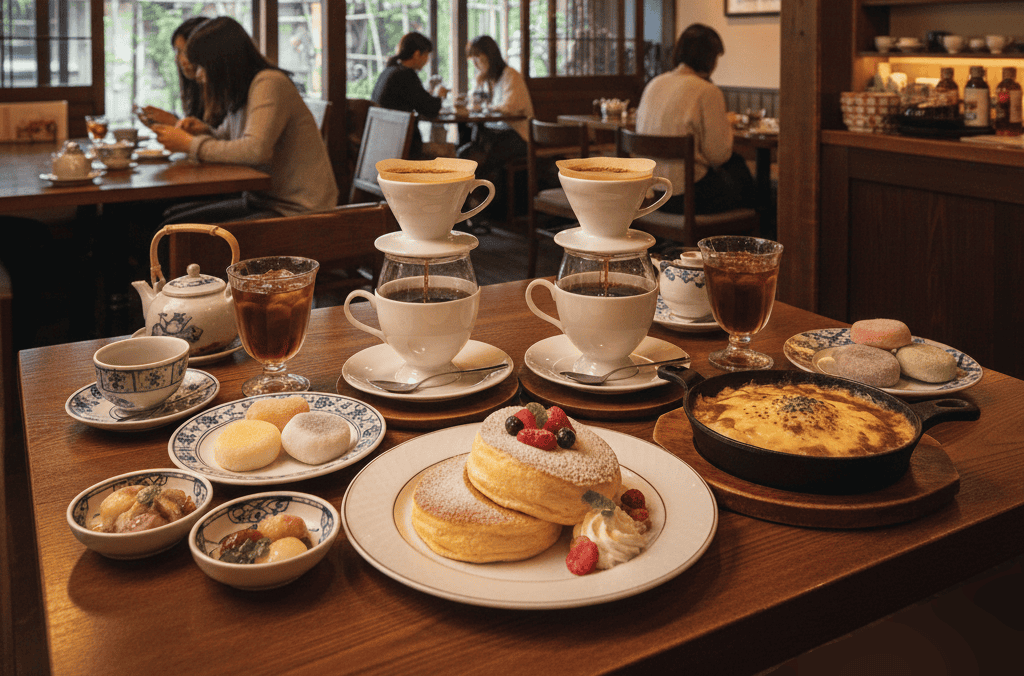

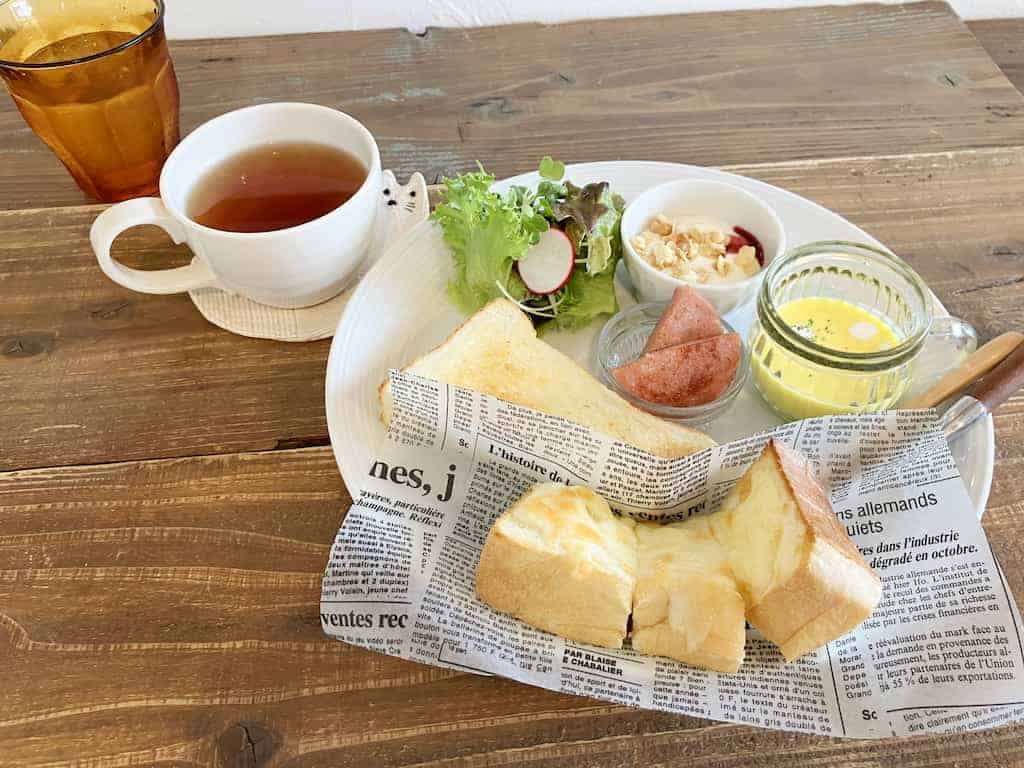
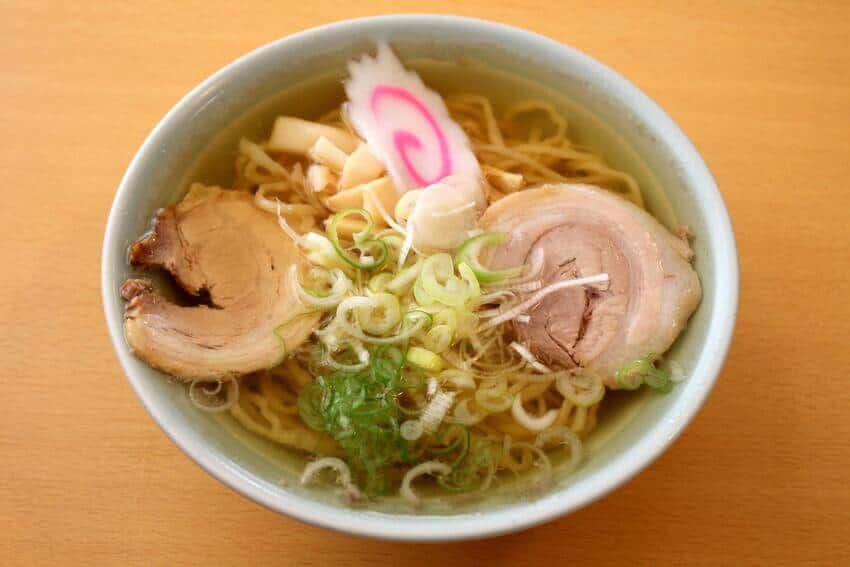
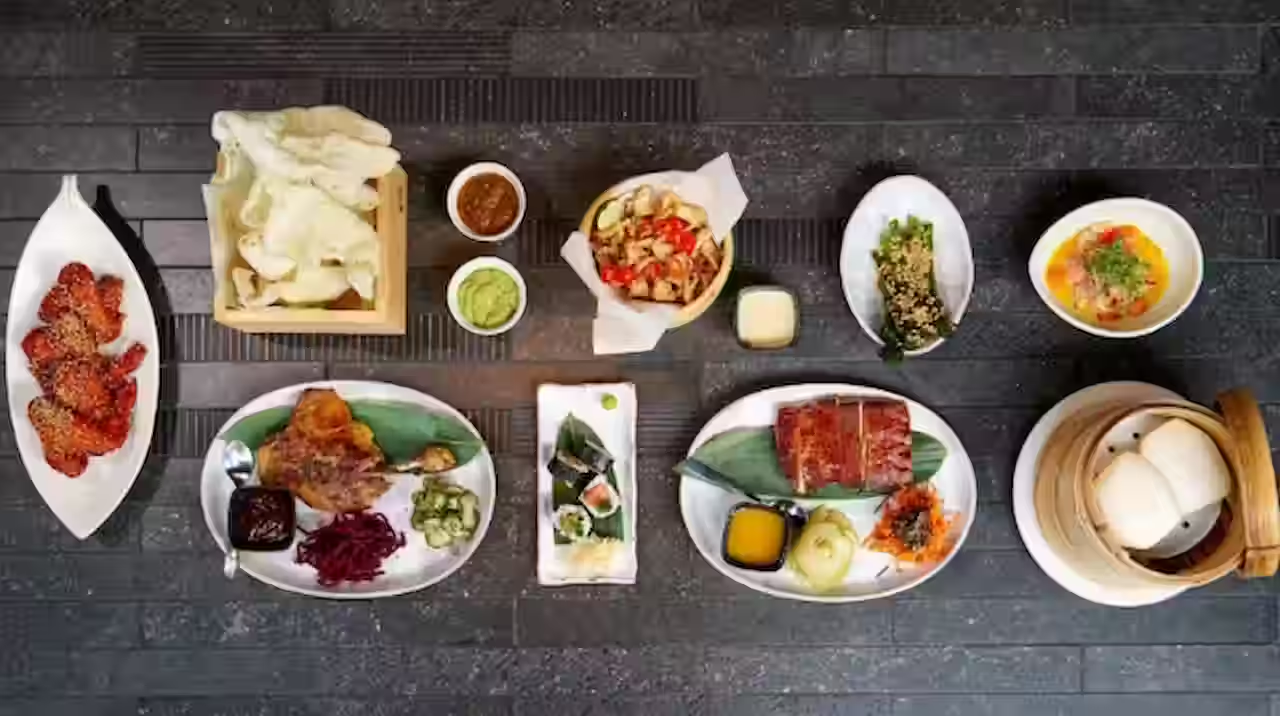

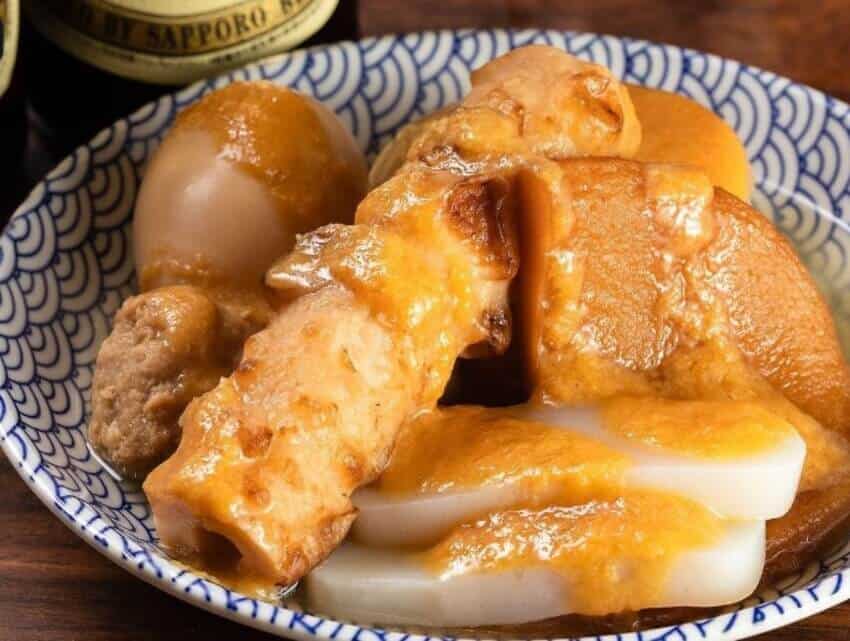
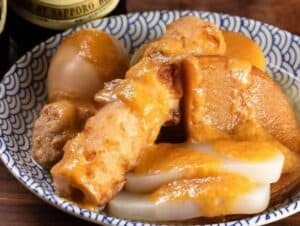

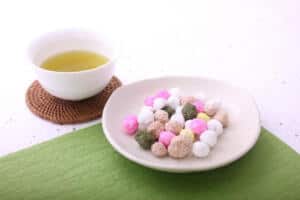
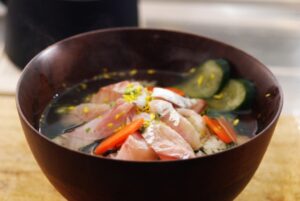
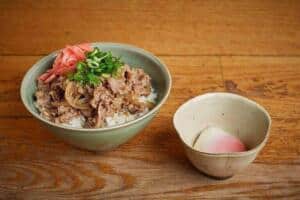
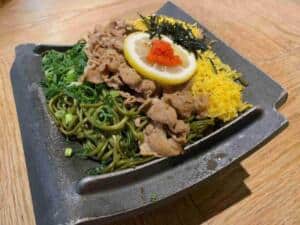
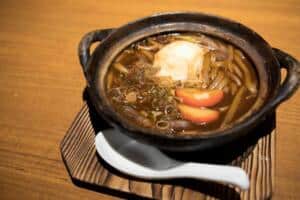


Comments